1. Hoboken, N.J.: Then
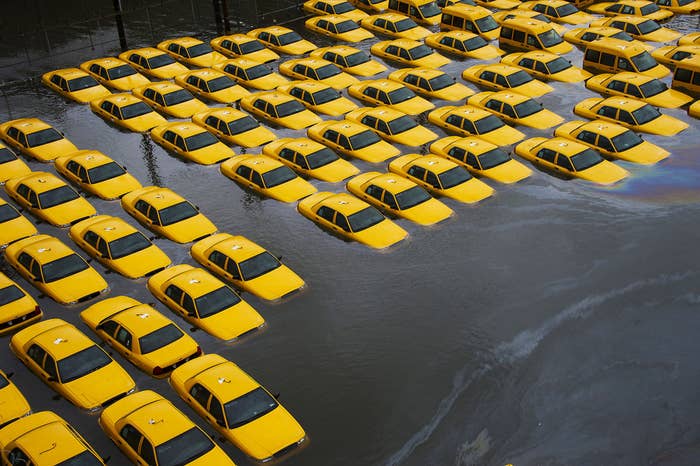
Now
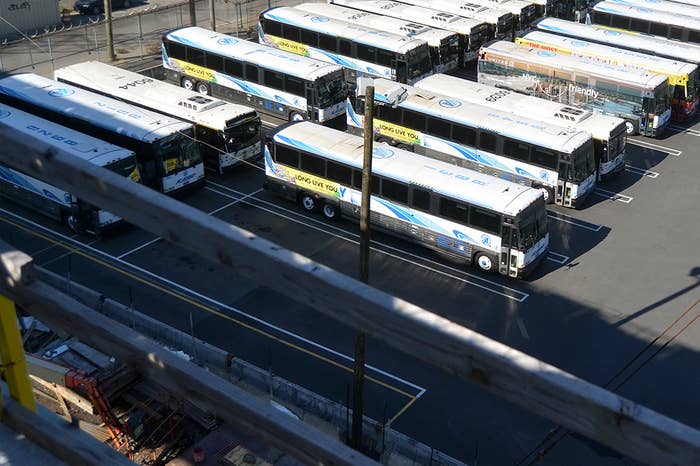
"My block was cut off, there were trees down, and I had no access to my car, so I decided just to walk around and see what I could find.
"I live fairly close to this parking lot, and so I walk and drive by there all the time. It's primarily buses, and the only time I've ever seen it used for taxis is the day of the storm. They were brand new cars — they weren't even marked yet. I returned a few weeks later, and the taxis were gone. I haven't seen taxis there since." — Charles Sykes
2. Breezy Point, Queens: Then
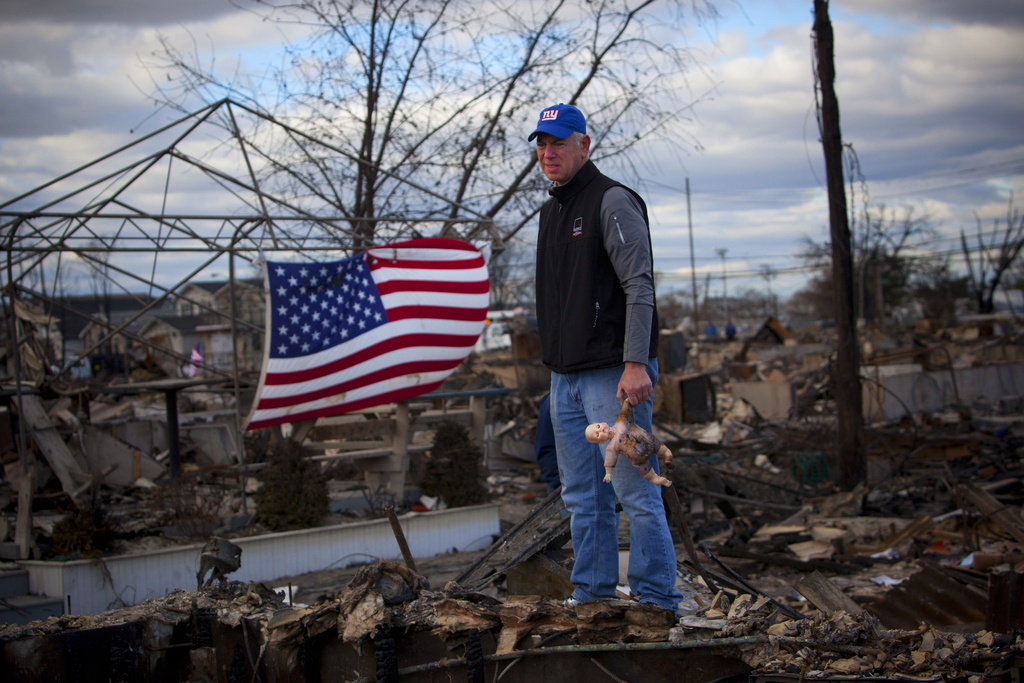
Now
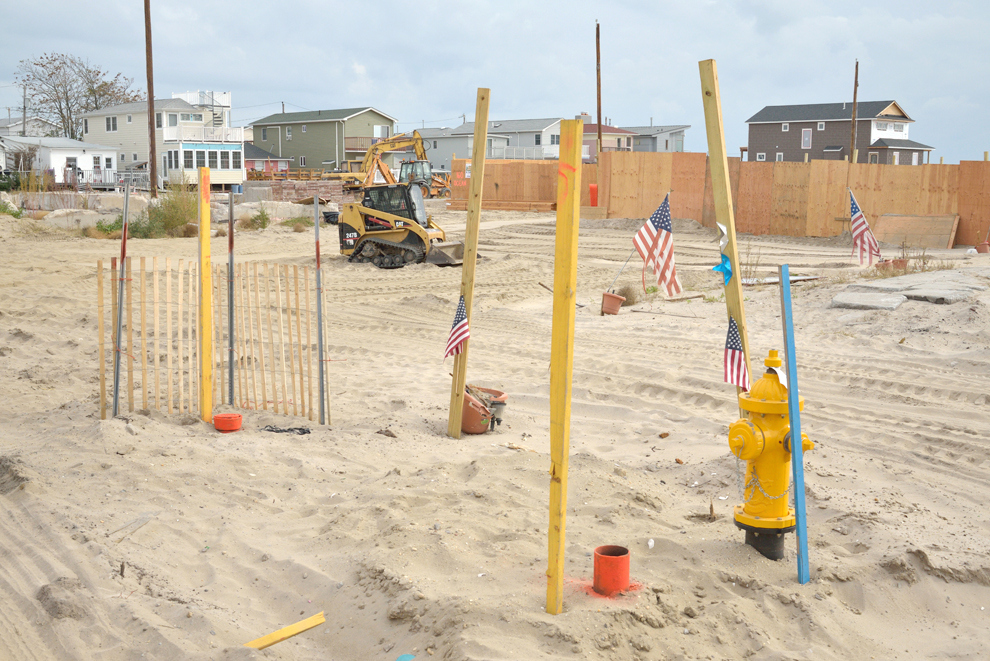
"His name was Brian. His house had been totally destroyed, but he hadn't yet told his daughters. They had evacuated before the storm hit. He just told his daughters he was dropping by the house to get some things and they asked him to get their dolls. So that's how I found him, digging through the remains of his house. He found one doll (in the shot). I took this as he stood over his place and had a last sweeping search, before leaving with one of his daughters dolls.
"Everybody in the area seemed to know each other. It was a tight community. A lot of ex cops and firefighters. Everybody came together to assess the damage." — Andrew Kelly
3. Bayhead, N.J.: Then

Now
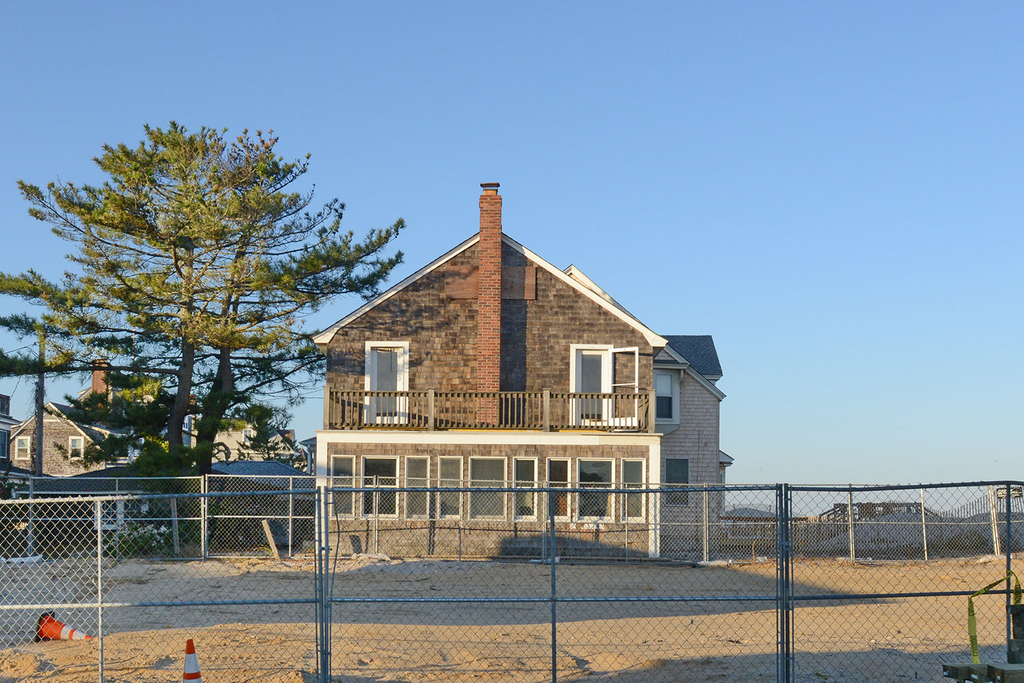
"When the ocean broke through, it destroyed the houses. Many were just pieces of wood out in the ocean. I'm sure this house was torn down.
"The multimillion dollar homes there were the first to be fixed. This was an interesting contrast. Those families could afford to bring in contractors to start the rebuilding of their homes, unlike the working class." — Tom Mihalek
4. Seaside Heights, N.J.: Then
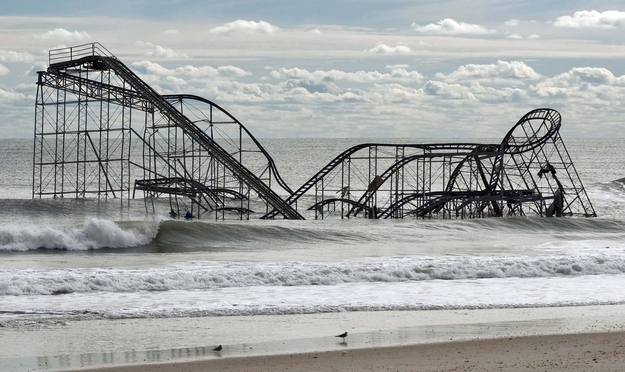
Now

"About 25 photographers and reporters were escorted over the bridge from Toms River to Seaside Heights. We did not have much to time to shoot and were restricted to where we could go by police. I remember photographing all the debris piled up on the beach while standing on the buckled remains of the boardwalk. The cops were all still in shock at the damage. It was incredible to me that the roller coaster was sitting relatively intact and upright. I made some frames of it with the remains of the pier and all the debris in piles on the beach. I moved a short distance to isolate the roller coaster in the water and was struck by how normal the beach looked. Uncovered shells after a storm, breaking waves, seabirds clearing skies, and the surreal image of the roller coaster.
"I've met many people who've seen that photo who have a story to tell about riding the coaster at some point in their lives. I've never been to that beach before and not since. But I'll always share a connection with the people who've been on the roller coaster." — Steve Nesius
5. Great Kills, Staten Island: Then
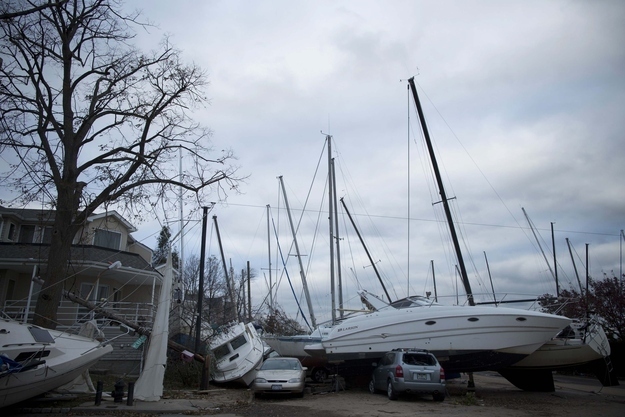
Now
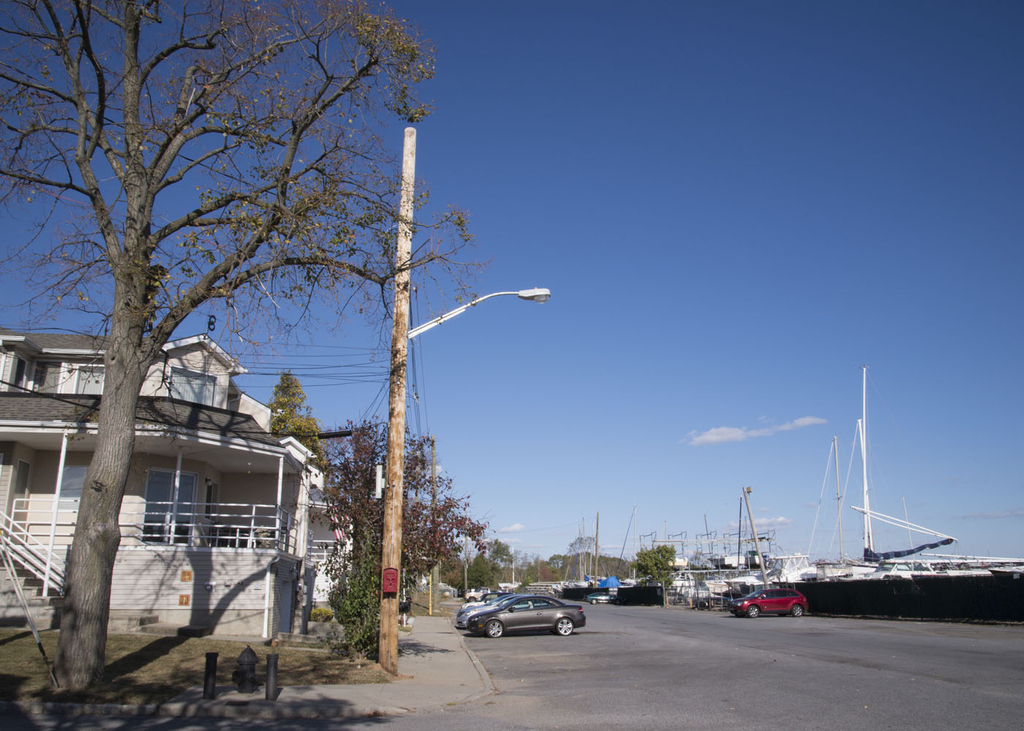
"This street is one block from the water. One side of the street is houses, and the other is a pier. It was covered in boats that had washed up onto shore. It was completely destroyed. I walked up and down the street, and I'd never seen anything like it." — Andrew Kelly
6. Great Kills, Staten Island: Then
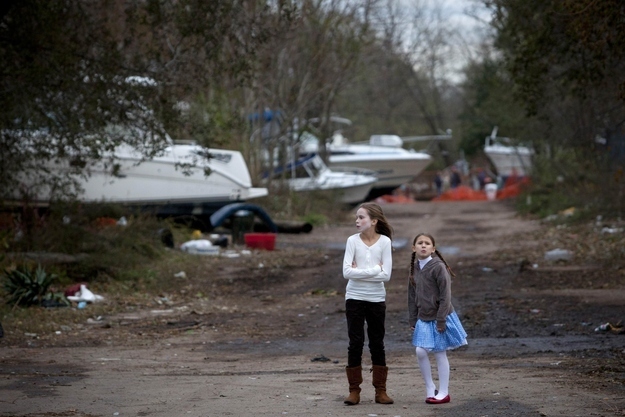
Now
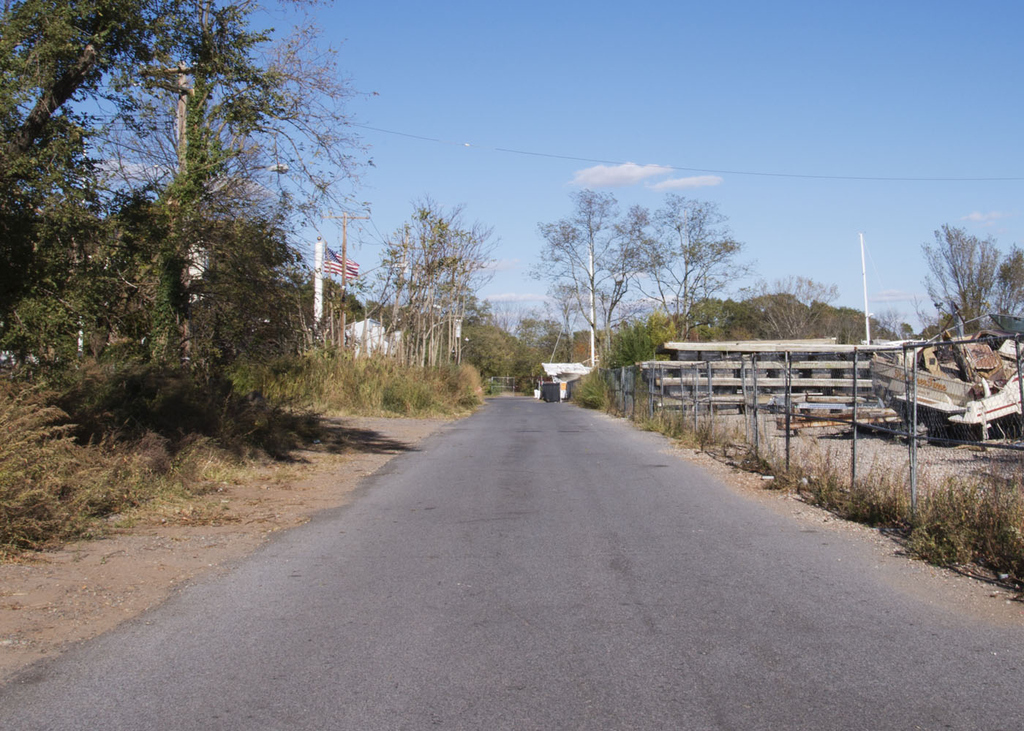
"There weren't a lot of people on the street, most had left before the storm. The girls were dressed in their Halloween costumes while their father packed up their car. They wanted to go trick-or-treating. I remember he had a very short fuse and wouldn't tell me their names." — Andrew Kelly
7. Rockaways, Queens: Then
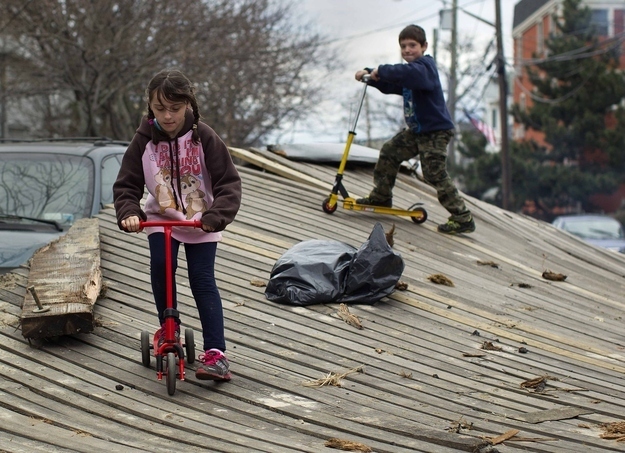
Now
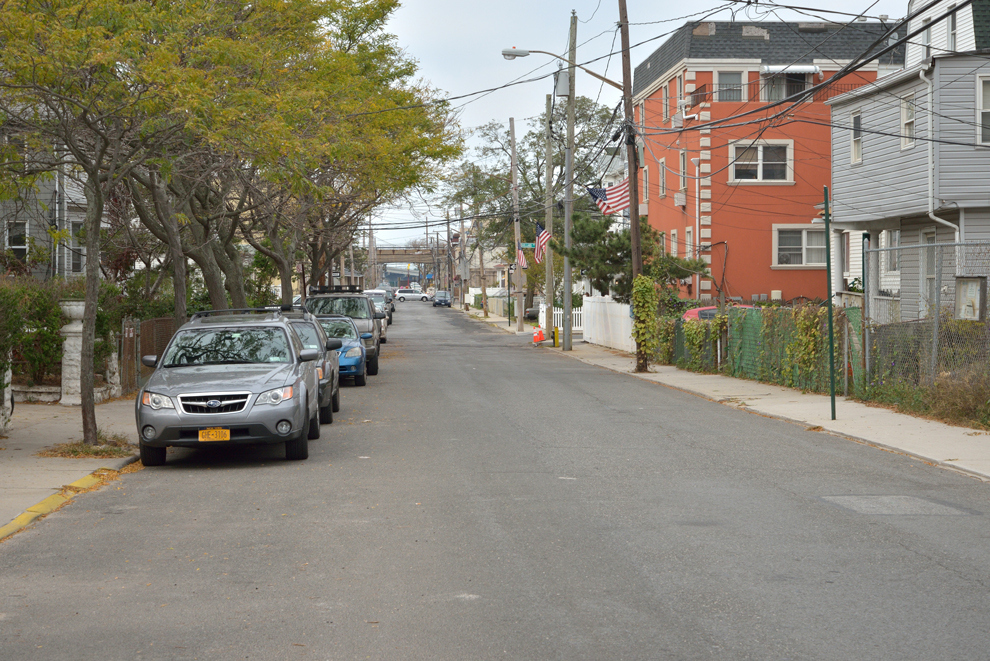
In the first picture, Kimberly and Ryan Kelliher ride their scooters on a piece of boardwalk that was washed along Beach 91st Street in the Rockaways. Today, the boardwalk and debris have been cleared, and the houses remain.
"It's tragic. People lost their homes or they lost loved ones, and it's difficult to cover that. But the hope is that by you covering it and by you sharing that story, that there will be a response that helps that person," said Reuters photographer Adrees Latif.
8. Brooklyn Bridge Park, Brooklyn: Then
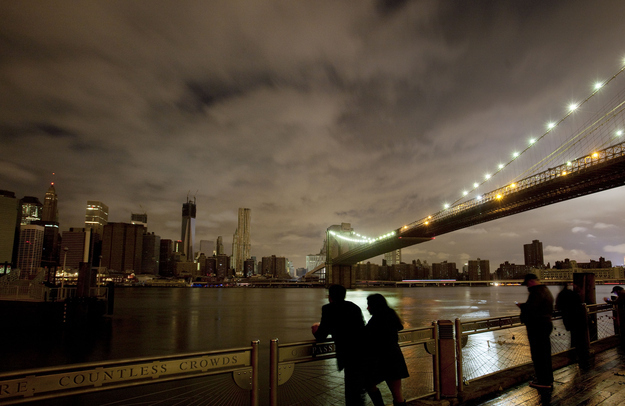
Now
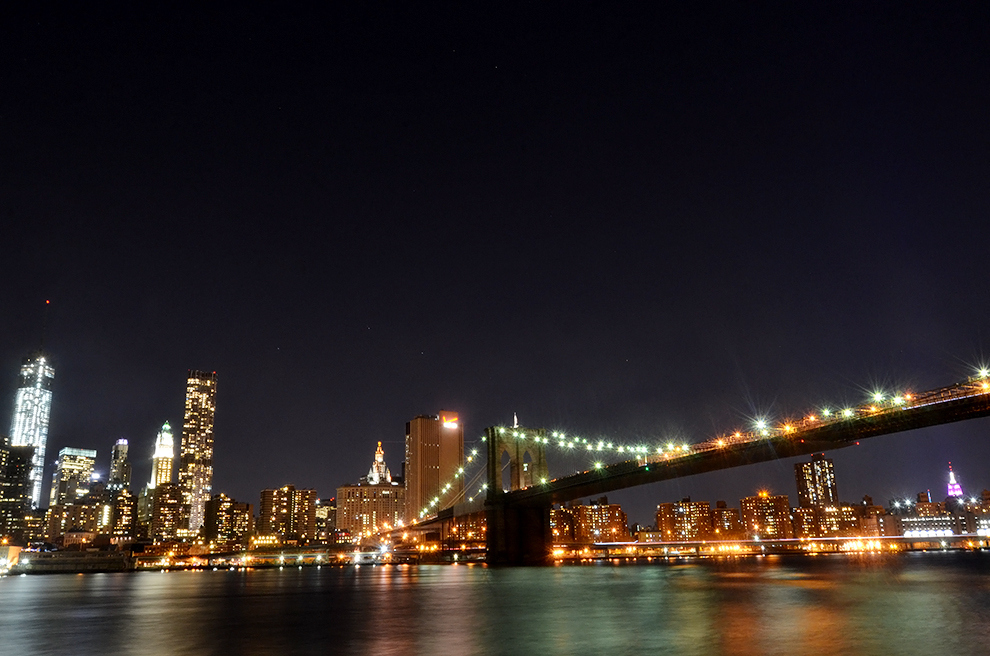
"The lights on the Brooklyn Bridge went as far as the second tower, and they went off going into Manhattan. That's what caught my eye.
"It was mostly young people who went down there to share the wonder of the city. It was kind of like being a tourist in your own town, seeing Manhattan without any lights on. It was mostly 20- to 30-year-olds. A lot of people were on dates." — Mark Lennihan
9. Belmar, N.J.: Then

Now
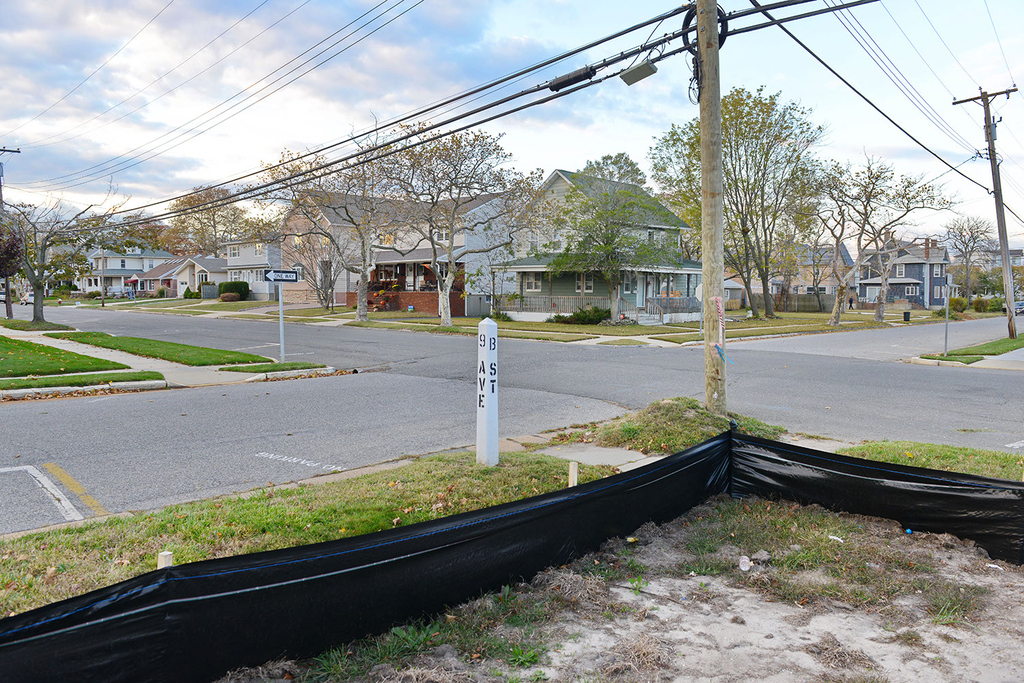
"Everybody was very resilient. Most people I came across were resigned to their fate. I only saw about 10–15 people walking around, and everybody just felt grateful that nobody had lost people in their lives.
"I was walking down the street photographing some people — it was a couple, a man and a woman, walking up the street toward me. He was carrying a gym bag, and she had a rolling suitcase. When I passed them, I stopped and asked for their names and how they made out in the storm, and they said, 'This is all we had left from our apartment.'" — Tom Mihalek
10. South Ferry-Whitehall Subway Terminal, Manhattan: Then
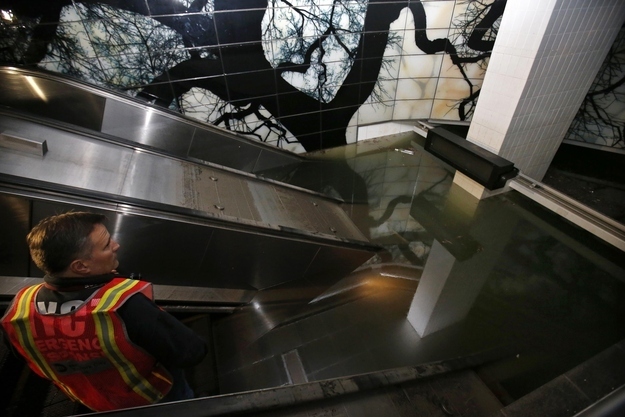
Now
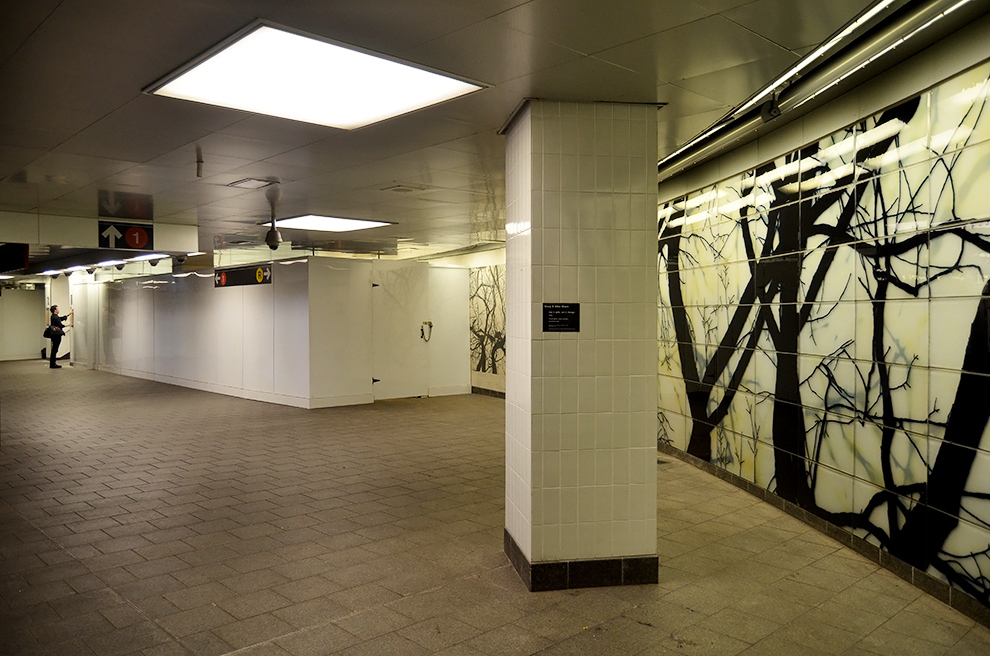
The entrance to the escalator at South-Ferry Whitehall station is closed off today, as construction continues. The R train, which ran between Manhattan and Brooklyn, stopped running between the boroughs after Hurricane Sandy. This month, the train began running over the bridge on the weekends.
"The challenge to us, the direction to us, is get (the transportation system) up and working again, make it so that people can resume their normal lives, can get back to work. That's what the focus is — a return to normalcy," NJ Transit's rail service executive director Jim Weinstein said after the storm last year.
11. Magnolia Playground, Long Beach: Then
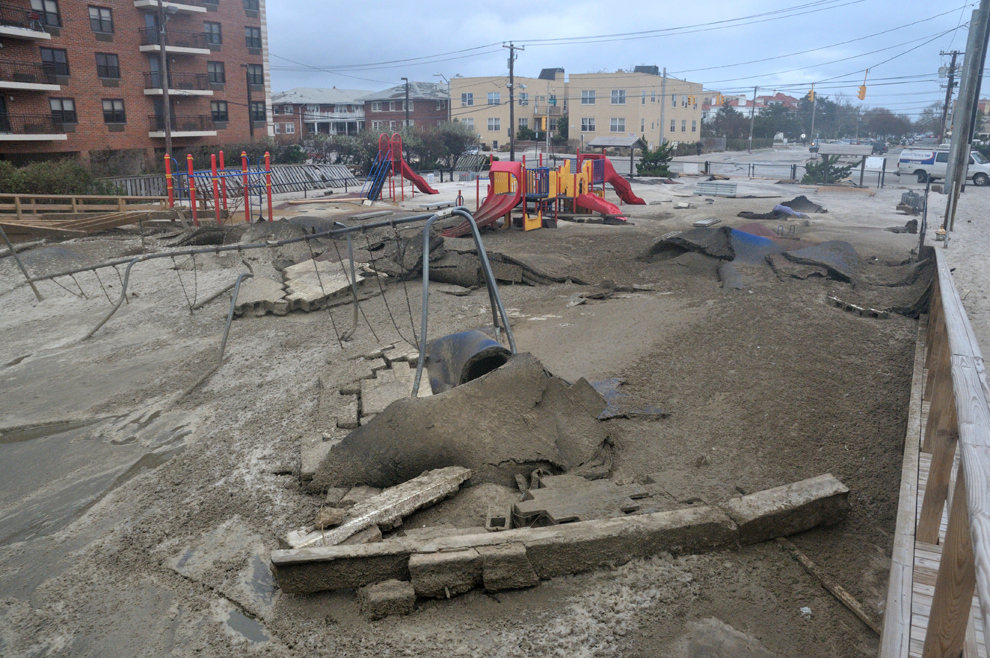
Now
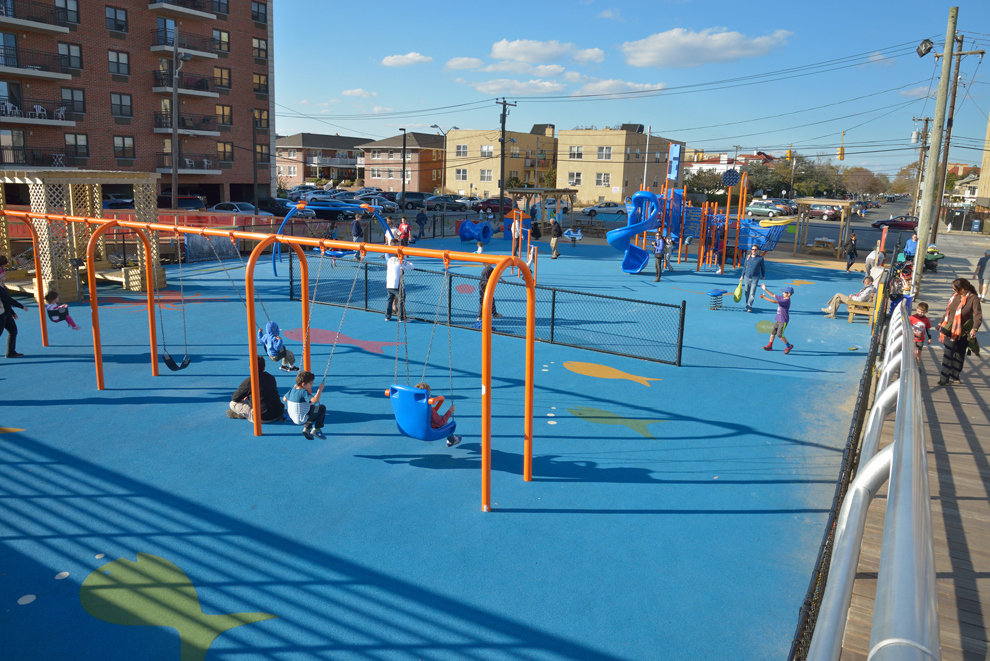
"The playground is gorgeous now, they really did a lot to fix it up. They've tried to make it a little bit more defensible and stormproof. They replaced the wood in the boardwalk with concrete.
"The neighborhood has changed, and it hasn't. It's kind of gone back to normal, but the people haven't." — Michael Zwiebel
12. Breezy Point, Queens: Then
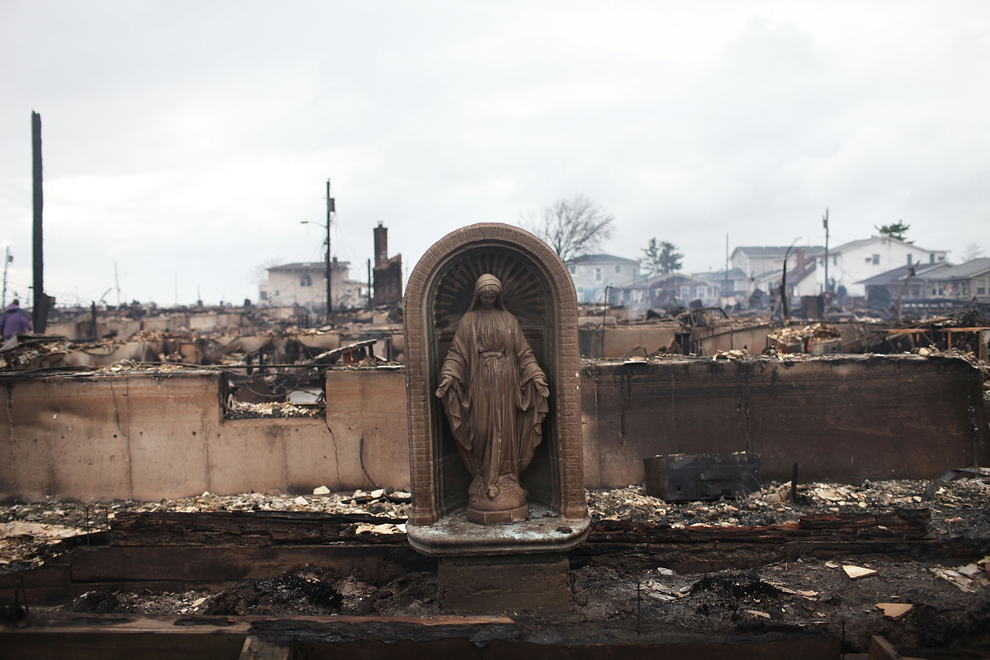
Now
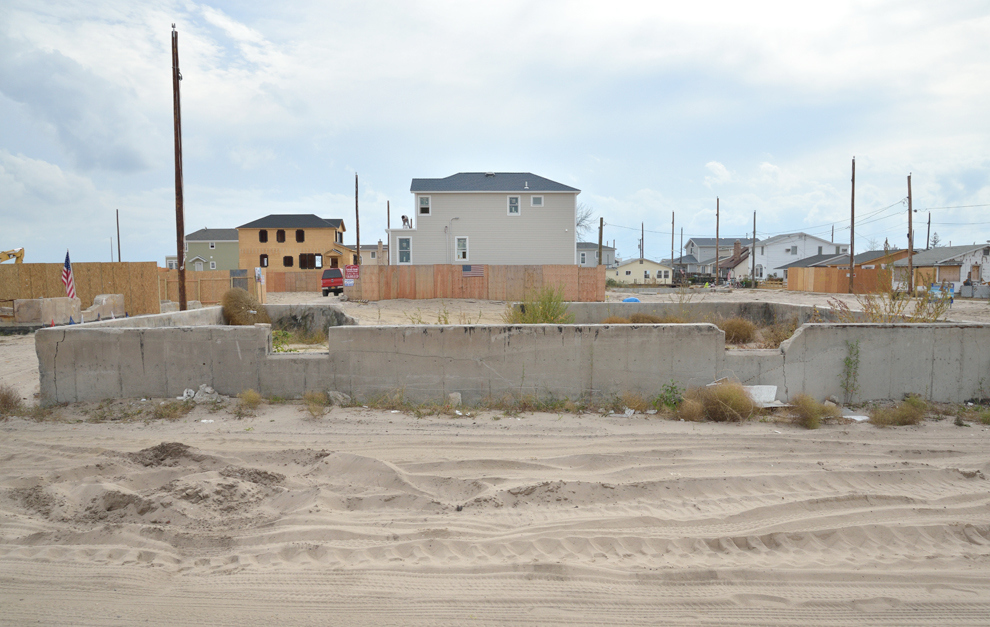
"It wasn't until I walked into Breezy Point that it hit me — how bad the storm was. It had a profound effect on me, that this was a significant, bad storm.
"Unless you grew up there, you probably wouldn't go to Breezy Point. It's a coop, and there's a gate, so that was my first time there. It is such a close-knit community. People passed houses down to their kids and grandkids. I've gone back a lot since last year, and I see it totally differently. Beforehand, I saw it as a place cops and fireman would go to retire. And now I see it as a community of hardworking people who are really good folks focused on preserving their community.
"The progress today is unbelievable. It's just a big work site, but most people have decided to stay and rebuild their homes. They're building bigger and stronger and higher.
"In New York, people are constantly moving, and it's hard to find a sense of community. In Breezy Point, you realize, 'Wow, your grandparents built this house!' When you grow up being attached to your community like that, it's hard to leave." — Spencer Platt
